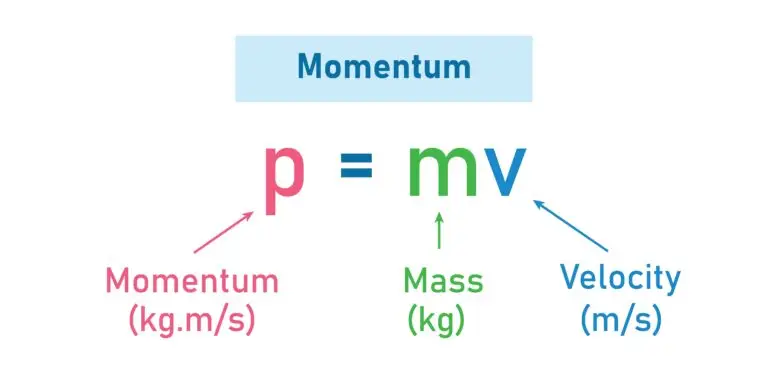Momentum

Table of Contents
What is Momentum?
Momentum is a key concept in physics, representing the quantity of motion an object possesses. It is determined by two factors: the object’s mass and its velocity. Because momentum is a vector quantity, it includes information about both the magnitude (how much) and the direction of the object’s motion.
The formula for momentum (�p) is expressed as �=�×�p=m×v, where �m stands for the mass of the object, and �v represents its velocity. This equation implies that a heavier object moving at a given speed has more momentum than a lighter object moving at the same speed. Likewise, an object moving faster will have more momentum than the same object moving slower.
Properties of Momentum
Magnitude
The magnitude of momentum is a measure of the amount of motion an object has and is directly influenced by both the object’s mass and its velocity. This means that the greater the mass of an object and the faster it moves, the more momentum it possesses. The relationship is linear, so doubling the mass or the velocity of an object will double its momentum, assuming the other factor remains constant.
For instance, a heavy truck moving at a certain speed has more momentum than a small car moving at the same speed because of the truck’s greater mass. Similarly, a car speeding up to twice its velocity, while maintaining its mass, will double its momentum.
Direction
The direction of an object’s momentum is directly aligned with the direction of its velocity. Since momentum is a vector quantity, it not only has magnitude (how much momentum) but also direction (where it is heading). In physics, this is often represented graphically by an arrow: the arrow points in the direction the object is moving, and its length corresponds to the magnitude of the momentum.
This alignment means that if an object is moving northward, its momentum vector will also point northward. The vector notation effectively communicates both the speed at which the object is moving (through the length of the arrow) and the direction of its movement.
Conservation of Momentum
The law of conservation of momentum is a fundamental principle in physics that asserts the total momentum of a closed system remains constant when no external forces are acting upon it. This means that in the absence of external influences like friction or air resistance, the amount of momentum within the system before and after any event (like a collision or interaction) will be the same.
In practical terms, when two or more objects collide or interact within a closed system, the total momentum of these objects before the interaction equals the total momentum after the interaction. For example, in a collision between two cars, the combined momentum of both cars before the crash will equal their combined momentum after the crash, assuming no significant external force acts on them.
Impulse and Momentum
Impulse and Momentum:
- Impulse is the change in momentum of an object when a force is applied over a period of time. It is given by the equation:
J=F\cdot \Delta t
where J is the impulse, F is the force applied, and \Delta t is the time interval over which the force acts.
- According to Newton’s second law of motion (F = ma), the impulse experienced by an object is equal to the change in its momentum:
J=\Delta p
where \Delta p is the change in momentum.
Units of Momentum
the International System of Units (SI), the unit of momentum is the kilogram meter per second (kg·m/s). This unit directly corresponds to the components of momentum: mass and velocity. Since mass is measured in kilograms (kg) and velocity in meters per second (m/s), the momentum of an object, calculated as the product of these two quantities, is expressed in kg·m/s.
Related Links
Acceleration
Centripetal Force
Force
Velocity